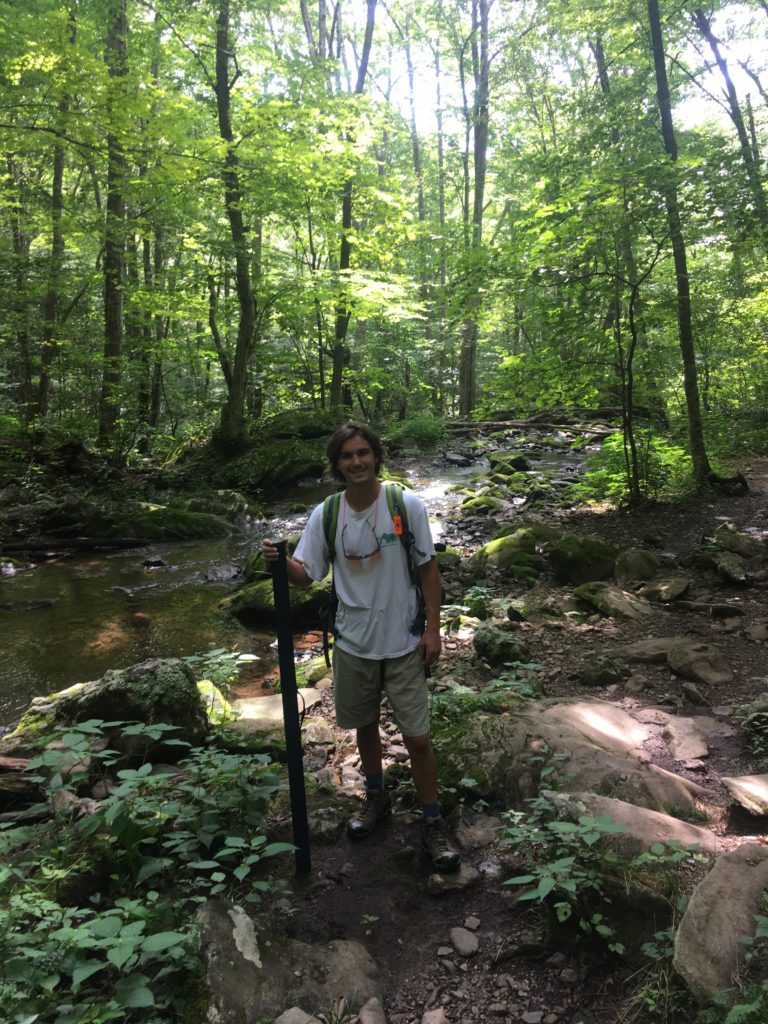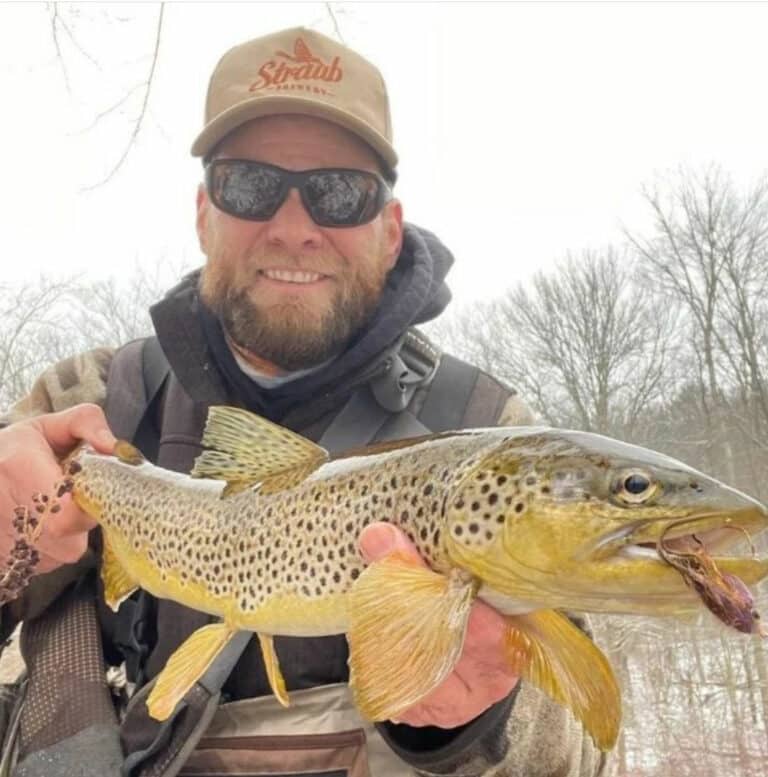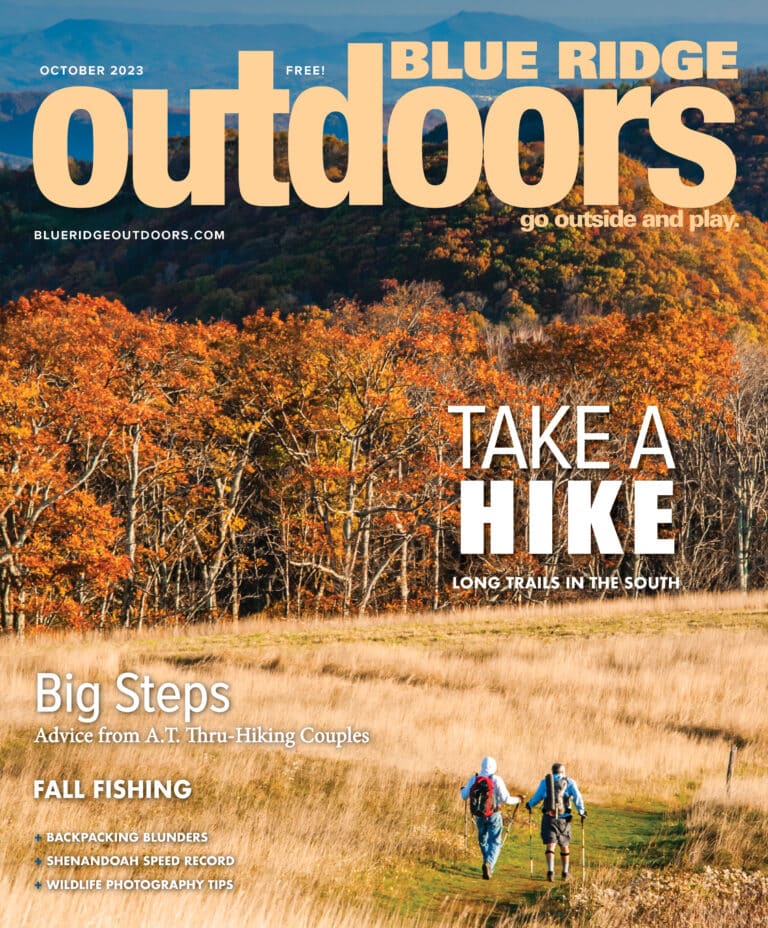“Unbelievable,” I murmured at Charlie as we watched my fly drift lazily through the water, undisturbed.
After several more casts, I stepped aside and gave him a try. Same result. We decided to move upstream, spooking three sizeable brook trout out of the pool we had just fished.
It was becoming a recurring theme. My brother and I were camping and fishing along the upper Rapidan River on the border of Virginia’s Shenandoah National Park. Steep and narrow, with boulders scattered throughout its freestone bed, this Appalachian stream tumbles off of Doubletop Mountain through a dense forest of hardwoods and mountain laurels. Herbert Hoover found its beauty so captivating that he established a cabin getaway at its headwaters to escape the Great Depression.

Far more captivating to my brother and me, it holds a reputation as the premier brook trout stream in Virginia, supporting thriving populations of big, native fish. On most Virginia streams, a ten inch brookie is a hog. On the Rap, ten is average and sixteen-plus not unheard of.
None of this matters if the trout won’t bite the end of your line. We were seeing fish everywhere, but none willing to cooperate. As the sun began to set on our first day, I had caught one tiny “dink” and Charlie had one less. We decided to call it quits and get a fresh start in the morning. A dinner of two Omaha Steak filets cooked Buffalo style on the coals of our campfire was less than adequate consolation for our lackluster performance on the water.
The next morning began with more of the same.
By lunch, I had been through every fly in my box. Even the Mr. Rapidan soft hackle nymph, a pattern created by local legend Harry Murray for these very waters, yielded nothing. Eventually Charlie and I became so frustrated that we both agreed to pick one fly and stick with it for the rest of the day.
I settled on an olive wooly bugger, an admittedly uninspiring choice that would at least give me a fighting chance with the deeper fish since we had not seen many risers. Charlie, now in full rebellion, went with a clunky yet oddly beautiful cream colored dry fly that could only be described as a “streetlight moth.” It imitated no insect that had hatched in these mountains during the last 100 years.
Ready for battle, we scrambled over a pile of car-sized boulders and suddenly found ourselves in another world.
Sheets of grey mountain bedrock furrowed by winter runoff and partially blanketed in moss spilled out of the thick mountain forest and into a long, clear pool. The pool grew much deeper at its head. Here, two small waterfalls gurgled past either side of a dogwood tree that had somehow found its home on a rocky ledge in the middle of the river. Just downstream from the waterfalls, an impossibly large shadow cruising below the surface revealed that an enormous brook trout had subsequently made its home beneath the tree.
Charlie had first crack at this pool. A beautiful sidearm cast slid under the dogwood branches, and the fly landed softly several feet above where we had last seen the shadow. Slowly it drifted with the current, and then the water exploded. I yelled and leapt from my crouched position to Charlie’s left, but his anxious face did not reflect my excitement. “That wasn’t my fly,” he said, and I realized he was right – the fish had ambushed something in the water directly beside the “moth.”
Unfazed, Charlie finished his drift, and then reloaded for another try (we had previously decided that the leadoff man only got two casts, so the stakes were high). Another perfect cast and drift. This time the fish hit the surface like a torpedo, and as it propelled out of the water, there was no mistaking the cream-colored wings in the corner of its mouth.
We watched the entire fish leap into the air.
It had the muscular girth and brilliant colors of a native trout that has spent its entire life in fast, cold mountain waters. We could see the blood red capillaries behind the gill plates as it bucked its head like a tarpon. Seconds later, the hook shook loose and the fish disappeared deep beneath the falls.
Charlie and I both estimated the fish’s size to be eighteen inches. Keep in mind that although the angler in question was my brother, he and I have never had the kind of relationship where undue credit is given. We did both agree that it would not be acceptable for me to throw a wooly bugger into this pool. We walked back to camp and then hiked several miles back to the Blue Ridge Parkway, not saying much.








